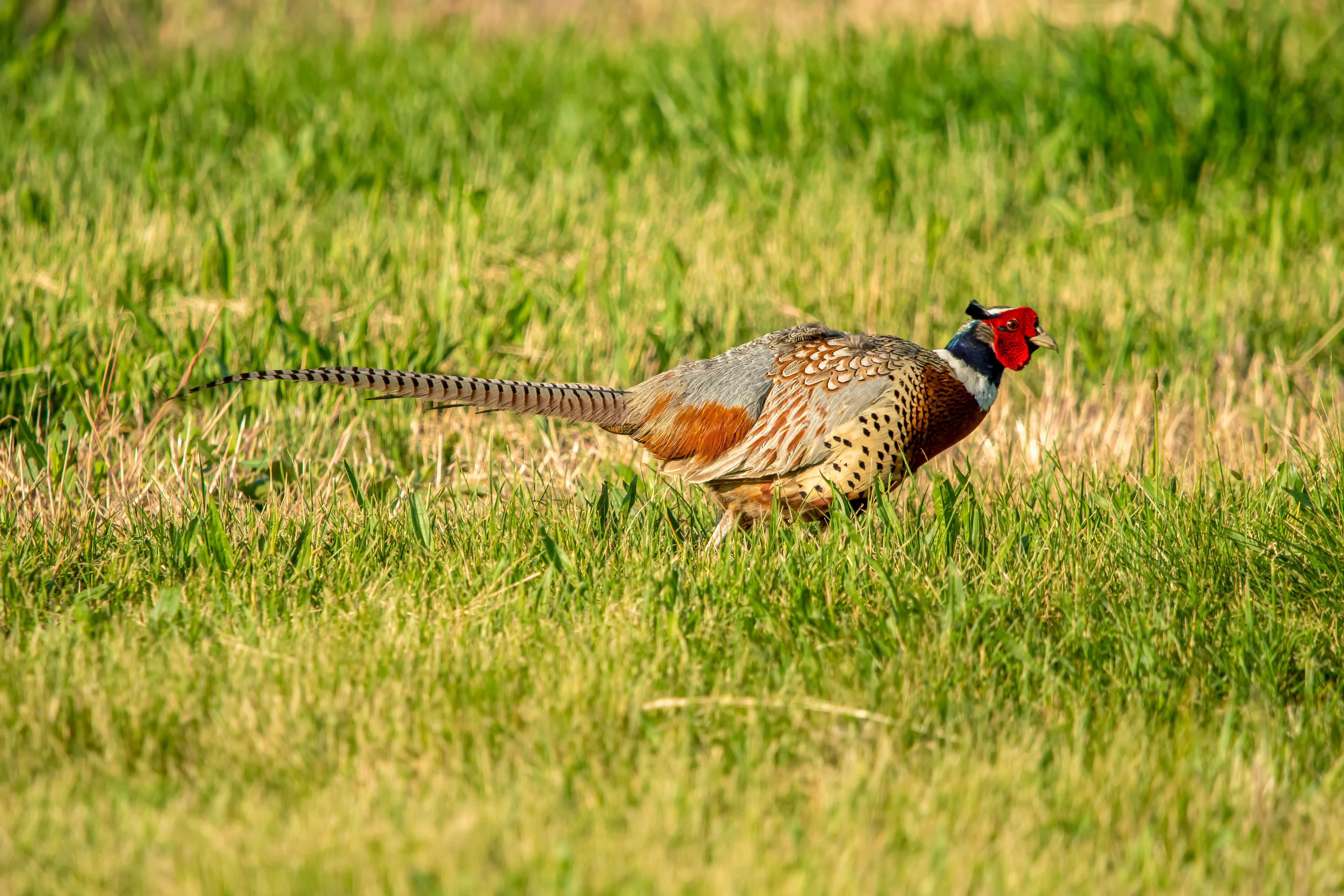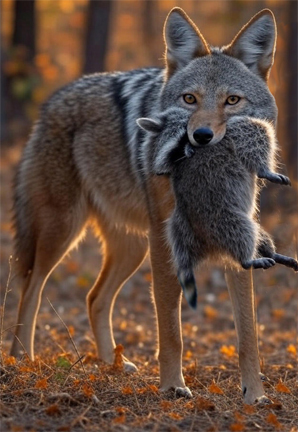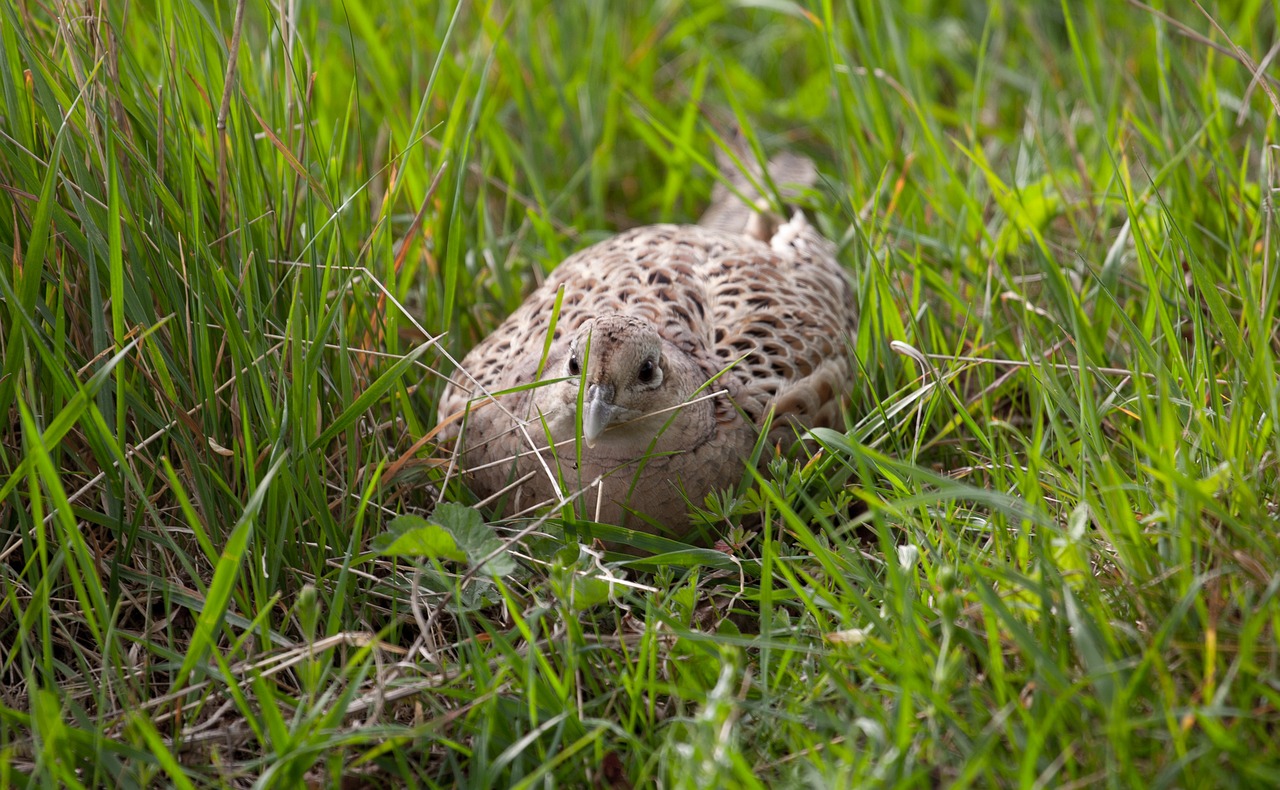As I was hunting the fields at Rose Lake State Game Area, the sun was warm on my neck. It was the kind of perfect October afternoon that lives in a pheasant hunter's memory.
My nine-year old Lab was working a thick patch of grass 40 yards out when I saw a flash of grayish-brown fur slipping along the wood line. A coyote.
My trigger finger instinctively moved toward the safety on my 12-gauge Benelli. It's a gut reaction, as natural to a bird hunter as tracking a flushing bird. The old logic kicks in immediately: a predator kills ringneck pheasants, and I need to kill it.
The load of 5s in my shotgun was meant for roosters, but given the chance, it would kill a coyote. For generations, that animal was nothing more than a varmint - a target of opportunity we took out to help the game we love.

I held my fire. I lowered my shotgun and just watched as it trotted into the brush and vanished. My dog, oblivious, kept working the scent of a bird.
Ten years ago, even five, I wouldn't have let that coyote walk. Today, I'm not so sure that shooting it would have helped anything. In fact, based on what biologists and some farmers are now telling us, I might have been doing more harm than good.
I know what you're thinking, because I thought it too: that's the craziest thing I've ever heard. But stick with me. The world of predation is a lot more complicated than the simple math we learned as kids.

The Old 'Common Sense'
For as long as any of us have been pheasant hunting, the formula was simple: Predators eat prey. Coyotes are predators, and pheasants are tasty prey. Therefore, if you want more pheasants, you need fewer coyotes. It seems irrefutable.
We've all seen the nature documentaries. We might have even found a pile of rooster feathers on a kill site and seen coyote tracks nearby. It's direct, visible evidence that reinforces our belief. Taking out a coyote feels proactive, like we're protecting our resource.
This belief was hammered home by a century of wildlife management that treated coyotes in pheasant country as vermin - something to be eradicated for the benefit of livestock and game birds.
For a long time, it went unquestioned. Even so, ecology is rarely a simple one-plus-one equation. It's more like a tangled web, and tugging on one string can make the whole thing shake in ways you never expected.

A New Perspective from the Back Forty
I never would have second-guessed the "shoot on sight" rule until a hunting excursion with my friend, Curt Mclosky, got me to start thinking a little more deeply. A neighbor of his, a farmer with barn cats to keep down the mouse population, told me, "Coyotes do the same thing for me, but they stick mostly to the cropland." He mentioned that coyotes slip out of his woodlots and take care of the raccoons that decimate his sweetcorn.
"I won't shoot coyotes. Even my chickens are happier with a coyote around. Oh, they'll kill a chicken too, but they'll kill a whole lot more raccoons and foxes - and that really helps my chickens!"
His reasoning got me thinking.
Who are the main pheasant nest predators? Who are the real troublemakers? Think smaller. Think lower to the ground.
The most devastating threat to a pheasant population isn't the occasional loss of an adult bird, but the wholesale destruction of pheasant nests. A hen might lay a dozen eggs, the future of the flock, in a shallow depression on the ground. For 23 days, that nest is a fragile, stationary target.

The animals perfectly evolved for eating a dozen eggs (or a dozen newborn chicks) are the smaller, expert nest-raiders: raccoons, skunks, opossums, and even feral cats.
Raccoons:
These masked bandits have an incredible sense of smell and dexterous paws that are custom-made for finding and raiding nests. A family of raccoons can methodically sweep through a nesting area and clean it out.
Skunks & Opossums:
Like raccoons, they are expert foragers who rely on their noses, sniffing out every inch of the dense cover where a hen hides her clutch.
Feral Cats:
Don't let their domestic ancestry fool you. A feral cat is one of the most ruthlessly efficient predators in the ecosystem, killing birds and small mammals with devastating effect.
These animals are the professional burglars of the nesting world. It's what they do best.
The Coyote as the Neighborhood Boss
So where does the coyote fit in? The coyote is the bigger, tougher dog on the block, and it doesn't tolerate competition.
This is a well-documented ecological principle called "mesopredator release." When a top predator (like a coyote) is present, it actively hunts, kills, or intimidates the smaller predators out of its territory.

A coyote sees a raccoon or a fox not just as a potential meal, but as a rival for the same resources, like rabbits and mice. The result is that in an area with a healthy coyote population, the numbers of raccoons, skunks, and foxes are naturally suppressed.
Sure, a coyote is an opportunist. If it stumbles across a pheasant nest, it won't pass up the free meal. But its hunting style isn't geared for finding nests.
Like my Labrador, a coyote has a great nose, but its primary hunting strategy for active prey like rabbits and mice relies heavily on its keen eyes and ears to detect movement. It's a different approach than that of a raccoon, which methodically sniffs out stationary targets like nests. This is why the coyote is a master 'mouser' but only an accidental nest-finder.
The Science Backs It Up
This isn't just theory. A landmark study on duck nesting in the Dakotas, led by researcher Marsha Sovada in the 1990s, provided powerful evidence.
What She Found:
Her team found that when coyote numbers were high, the population of red foxes - a major nest predator - was low, and duck production soared.
When coyotes were present: Red fox populations were low, and duck nesting success was high.
When coyotes were removed: The red fox population exploded, and duck nests were decimated again.
The same logic holds true for all ground nesting birds - like pheasants.
Allowing coyotes to roam isn't a simple solution for all species. In the case of ground-nesters like wild turkeys, where coyotes pose a serious threat to nesting hens, the situation is more complex and heavily influenced by habitat - demonstrating that nature is an intricate and delicate balance.
Now, none of this means coyotes are harmless across the board. If you're a deer hunter, you're probably thinking about fawns - and you're right. Coyotes do take fawns, especially in spring.
When it comes to fawns - stationary, scent-hidden, and often isolated - coyotes rely more on their noses.
Even in the deer woods, the research isn't as clear-cut as many hunters believe. Habitat quality and how whitetail deer does behave - dropping fawns in dense cover and keeping their distance to avoid leaving scent - often matter more than predator numbers alone. The point isn't that coyotes are always good - it's that their role is complex. And when it comes to pheasants, they might be doing more good than harm.

A Change in Thinking
Today, when I see a coyote on a pheasant hunt, the internal calculus has changed. The old instinct is still there, a whisper from a previous generation of hunters. But it's followed by a new set of questions:
Is this animal a liability, or is it an unpaid, four-legged game warden protecting the very resource I'm here to enjoy? Am I looking at a problem, or a crucial part of a complex solution?
I'm not suggesting we hang up our predator-hunting rifles for good.
Population control is a valid management tool. But for the bird hunter walking the fields, the decision to shoot a coyote is no longer a simple one. It's a management decision with consequences that ripple through the entire food web.
Next time you see that flash of fur on the horizon, pause for a second. Remember the masked bandits and the other raiders of the night.
You might just find yourself lowering your barrel and giving a quiet nod, a silent "thanks" for the work it's doing. You might just let the pheasant's best friend walk on by.
